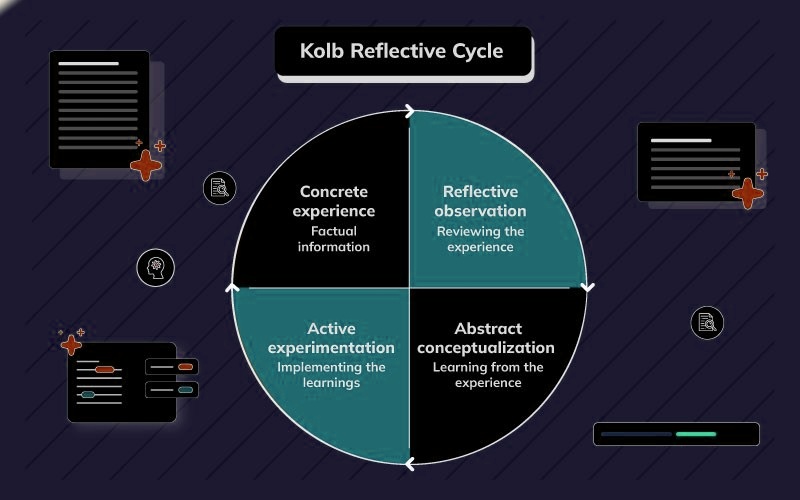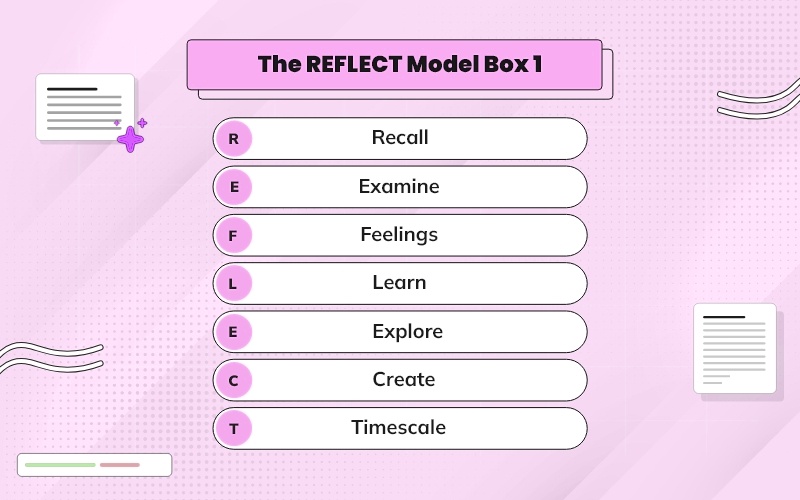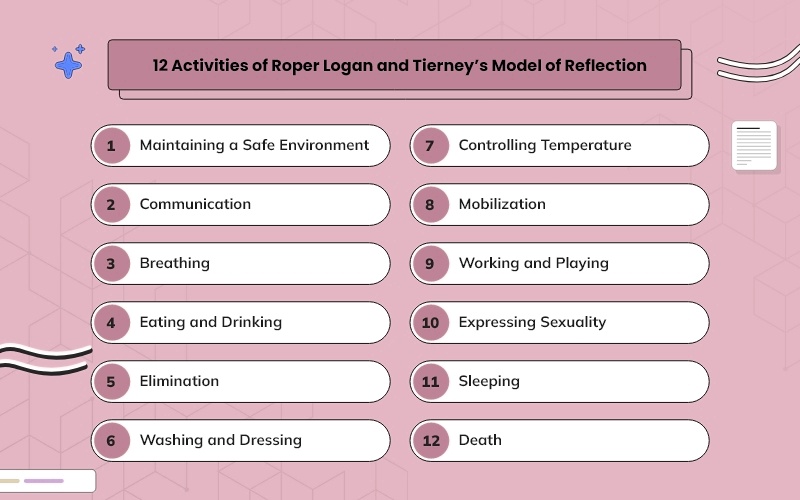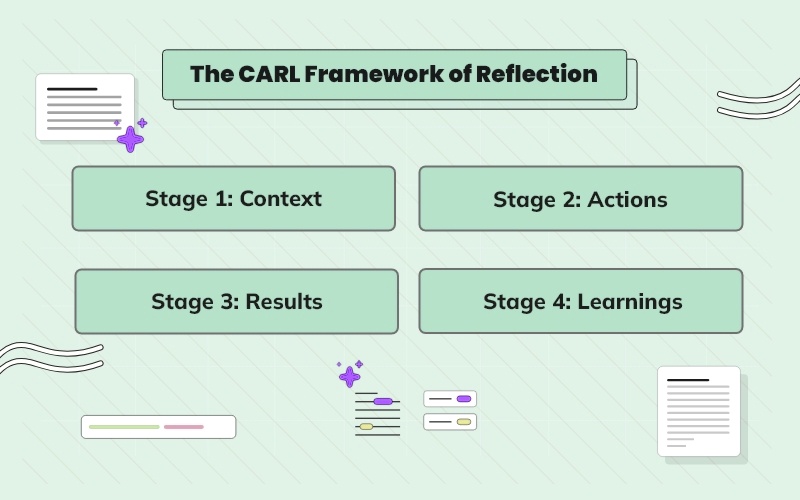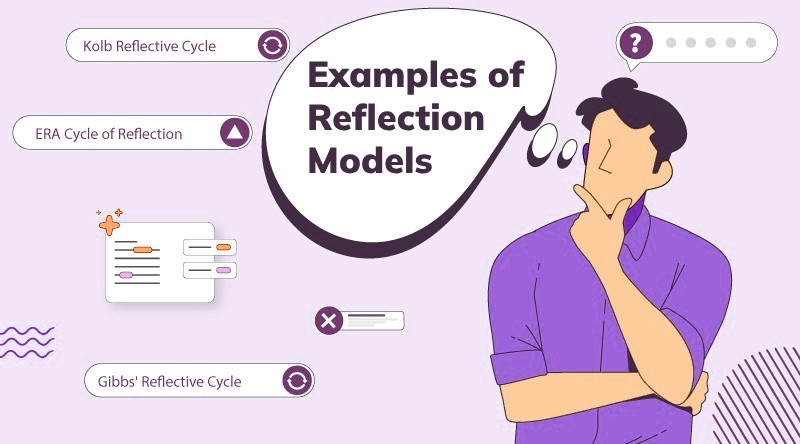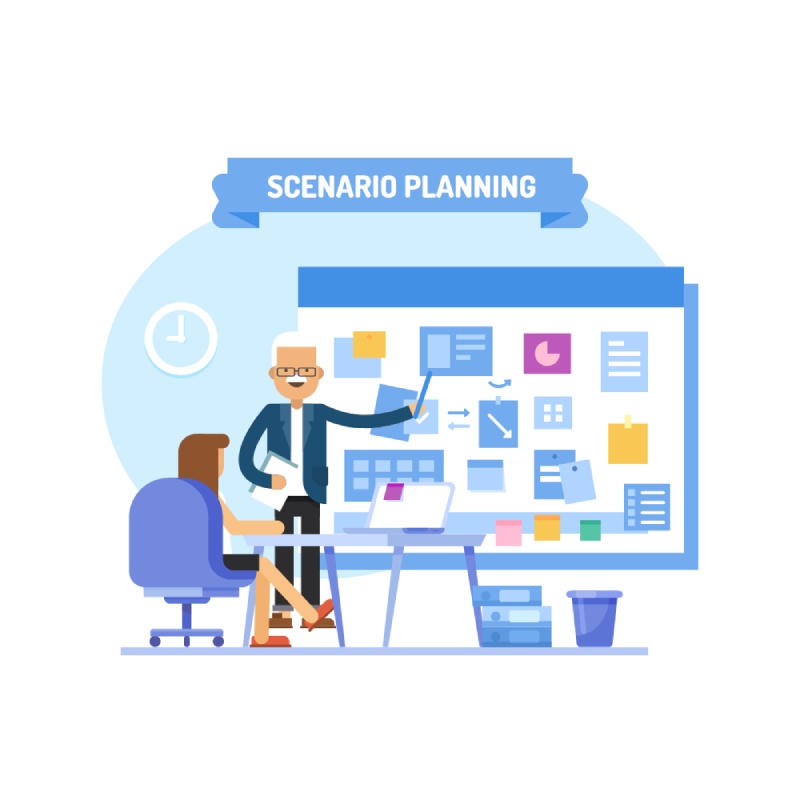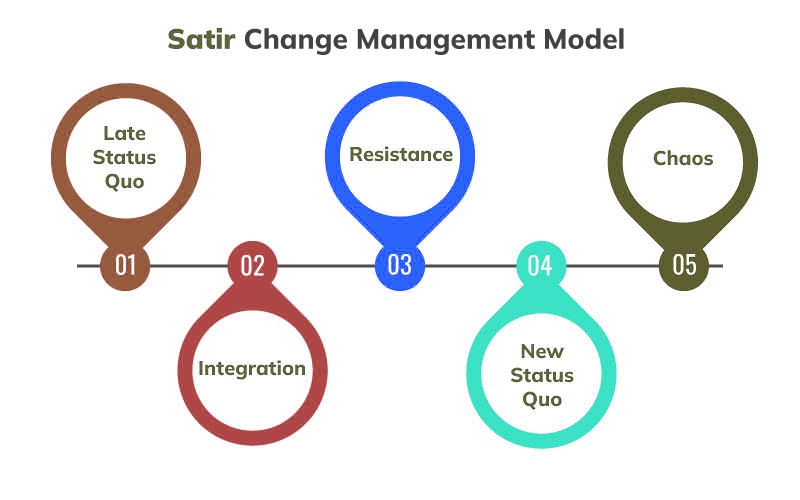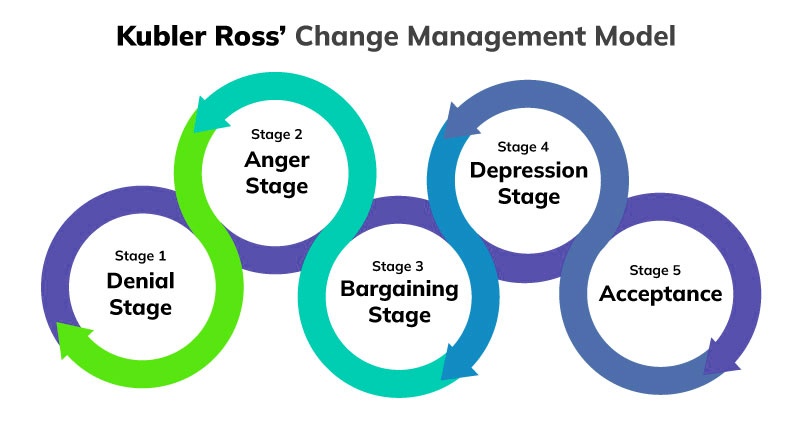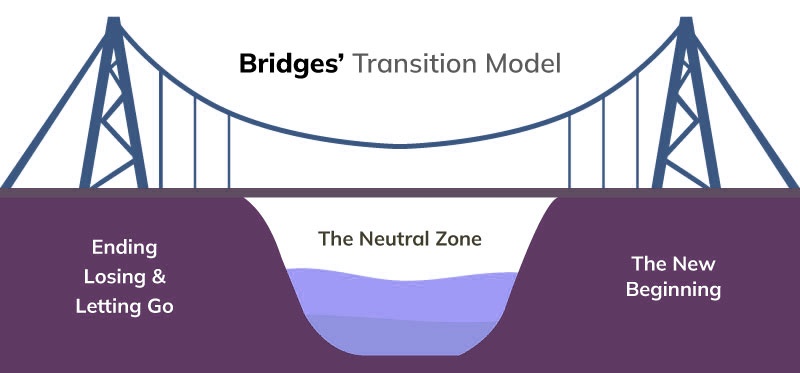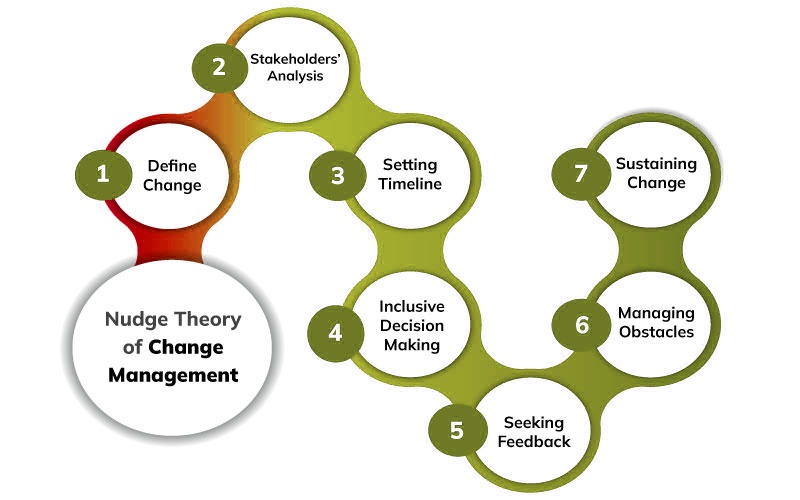Overview
Kolb's reflective cycle was given by David Kolb in 1984 by focusing on four stages and different styles of learning. In this learning theory and reflective cycle, Kolb quoted that “Learning is a process whereby knowledge is created through a transformation of experience”. This experiential learning cycle includes concrete experience, reflective observation, abstract conceptualization, and active experimentation (Bergsteiner & Avery, 2014).
Table of Contents
Kolb's reflective cycle can also be referred to as a shorter version of Gibbs model, as the basis of both models are about an individual's own experiences (Abdulwahed & Nagy, 2009). However, the difference between the both lies in the number of stages in each model. An essential aspect over here is to consider that reflection models like Gibbs and Kolb focus on individual learning whereas there are even other reflection models such as Schon model of refection that are helpful for reflecting on the organisational problem. In this reflective cycle, individuals review past experiences, formulate concepts, and apply the learnings gained. A detailed description of the different stages in Kolb’s reflective cycle is discussed as follows-
Four stages of Kolb’s reflective cycle
Stage 1: Concrete experience
Concrete experience is the section that relates to your new experiences or situations being encountered by you at different aspects of life. In this stage, you need to think meticulously about newly experienced situations or past experiences you want to reflect upon. It is a considerable fact to know that this section focuses on factual information and explains the whole context of the situation you are reflecting upon. At this stage, you can write a reflection on a specific situation by answering the following questions.
- What happened?
This will explain factual information about an experience that could be about a hands-on experience with surgery, a group or an individual project. - What did you do?
This section will highlight your and other involved people’s roles and responsibilities in the experience. - What did others involved in the situation do?
This question will answer the impact and influence of others’ actions in the situation.
Stage 2: Reflective observation
In this section, after describing a whole experience in concrete form, the next section is about writing the reflective observation. Reflective observation is more about what you have learned and what you observed during your experience and explaining the same in your reflection writing. In this section, you will majorly highlight the differences between your assumptions before that and how those perceptions have significantly changed after the experience. The key questions that can be considered to explain this stage in reflective writing include
- What did you assume?
This will highlight your prior assumptions about the experience. - What happened?
In this, you will highlight the reality of the experience. - What did you learn?
This question will highlight your learnings based on your experience.
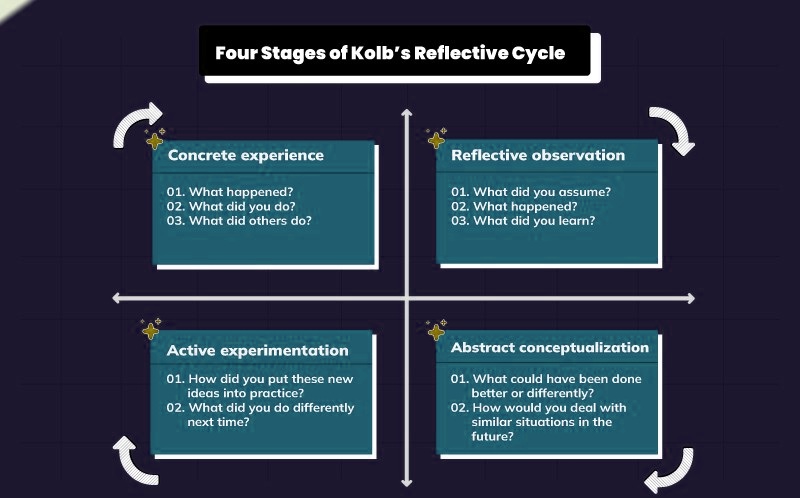
Stage 3: Abstract conceptualization
Abstract conceptualization is the third stage in reflective practice which leads to explaining new ideas with a focus on the experience as well as new learnings gained from present experience. Alongside, you will also focus on how these learning will help you attain your future SMART goals more effectively. In this stage, you need to explain your new ideas and learnings by answering the following questions.
- What could you have done better or differently?
In this, you will highlight the actions that could have resulted in better results. - How would you deal with similar situations in the future?
This question will answer details about future action plans
Stage 4: Active experimentation
The last stage in this reflective practice is active experimentation which implies a detailed description of how your newly acquired knowledge is applied in practical situations. This practical knowledge will help you to deal with various situations and try out new strategies. Some assisting questions that will help you in defining this section are
- How did you implement these new ideas into practice?
This will highlight various methods through which you will put newly gained knowledge into practice. - What did you do differently when a similar situation occurred again?
This will shed light on different actions you will take in a similar situation in the future.
Moving ahead, for better comprehension, let us apply Kolb’s model of reflection to reflect on the learnings.
Kolb’s reflective cycle example in nursing
Case assessment - This reflective example will highlight the experience of a nurse during her summer internship in the surgical ward. This reflection practice will focus on a nurse’s experience who was treating a patient suffering from leg ulcers and faced some challenges in handling the patient.
During my summer internship in compression therapy for leg ulcers, I was placed in an ulcer treatment ward. On one of my visits with a community nurse, I was asked to change the dressing of a patient suffering from leg ulcers. Leg ulcers are often difficult to treat and successful treatment majorly depends on the correct diagnosis and treatment of the identified causes (Dogra & Sarangal, 2014). Hence, firstly I removed debris from ulcers using nonstick dressing so that ulcers could get a space to heal. Along with this, I also applied a compression bandage for improving vein circulation in his leg. Aside from this, I especially used gloves for removing the dirty dressing and applying new ones. But suddenly my senior nurse intervened and gave some systematic antibiotics to the patient. I was left confused after her sudden intervention.
In the beginning, I was pretty confident about my theoretical knowledge and had all the information about ulcer management practices. A major reason was that I did not use an aseptic non-touch technique because I assumed that a clinical clean technique would have been enough. After the dressings were changed, I asked for feedback from my senior nurse on my performance. She then guided me that although I used a clinical clean technique while changing a dressing, I failed to consider the risk of infection. Along with this, she highlighted that I forgot to change gloves between removing dirty dressings and applying new ones. She thought that it could have led to a serious infection which was the reason she intervened and gave the patient some systematic antibiotics. Through her feedback, I learned that the aseptic non-touch technique is also important to remove the risk of infection. Besides, I observed that a senior nurse also provided systemic antibiotics.
After engaging in this situation and taking feedback from a senior nurse, I got to know that an aseptic non-touch technique could have been applied while changing the dressing of a patient suffering from a leg ulcer. The use of this technique helped to prevent the risk of contamination and infection. Now, I have seen that ulcer management also requires considerable care and treatment. If a similar situation occurs next time, I will ensure that I follow the same steps and make additional changes as per the guidance of my senior.
After one week after the occurrence of this situation, I was again assigned the task of changing the dressing of a patient with venous ulcers. During this ulcer management, I used the aseptic non-touch technique whereby I took several standard precautions which include hand decontamination, changing gloves while removing dirty non-sterile gloves dressing, applying a new dressing, etc. Along with this, I also applied various infection prevention and control precautions during this case to prevent the risk of infection and complications. I also gave the patient clinical antibiotics. Antibiotics have a minor effect on ulcer healing but are a major requirement for clinical infections with surrounding cellulitis (Simon, Dix & McCollum, 2004). This case treatment then helped me to regain confidence and improved my ability to effectively engage in various wound dressing activities.
References
Bergsteiner, H., & Avery, G. (2014). atwin-cycle experiential learning model: reconceptualizing Kolb's theory. Studies In Continuing Education, 36(3), 257-274. https://doi.org/10.1080/0158037x.2014.904782
Abdulwahed, M., & Nagy, Z. (2009). Applying Kolb's Experiential Learning Cycle for Laboratory Education. Journal Of Engineering Education, 98(3), 283-294. https://doi.org/10.1002/j.2168-9830.2009.tb01025.x


